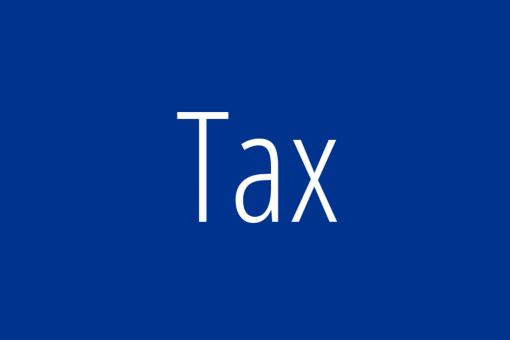Regulation (EU) 2023/1114 of the European Parliament and of the Council on markets in crypto-assets (MiCA) was adopted on 31 May 2023. The MiCA provisions on stablecoins will come into force on 30 June 2024 and the whole regulation will come into force on 31 December 2024.
What is MiCA Regulation about?
The MiCA Regulation represents the largest comprehensive regulation of crypto-assets at EU level, covering any crypto-asset entity engaged in the issuance, public offering, trading, exchange of crypto-assets and related services (e.g. custody and management of crypto-assets). MiCA Regulation introduced harmonized definitions in the field of crypto-assets and protections for crypto-asset investors in order to ensure that crypto-asset operators do not abuse crypto-asset investors' money.
MiCA Regulation covers the conditions for crypto-assets to be brought to the market and offered to the public. In particular, the MiCA Regulation sets out the requirements for the authorization, operation, organization and management of a crypto-asset issuer as well as a crypto-asset service provider. It further introduces harmonized rules for the protection of crypto-asset holders and crypto-asset investors, focusing in particular on transparency and disclosure of information in relation to crypto-assets. Under the MiCA Regulation, crypto-assets are supervised by the European Banking Authority (EBA) at EU level and at local level by the competent Supervisory Authority of that Member State. National Bank of Slovakia in the Slovak Republic.
MiCA Regulation also contains provisions on the prevention of unauthorized disclosure of confidential information and market manipulation in crypto-assets. In order to prevent crypto market manipulation, the MiCA Regulation also applies to persons engaging in activities that abuse the crypto market.
Passportization will allow a crypto-asset service provider to operate freely throughout the EU under a single authorization.
The MiCA Regulation will enable cross-border tracking of crypto-asset transfers across the 27 EU Member States, allowing suspicious transactions to be identified and prevented.
Crypto-assets according to MiCA Regulation
MiCA Regulation defines crypto-asset as a digital representation of a value or of a right that is able to be transferred and stored electronically using distributed ledger technology or similar technology. MiCA Regulation does not apply to crypto-assets that are considered as financial instruments according to MiFID II.
The MiCA regulation recognizes 3 types of crypto-assets, which are:
- asset-referenced tokens (ART) that are bound to any value, right or combination thereof, including being bound to the value of multiple official currencies. ARTs can be emitted by banks and issuers of ARTs (a new type of licence under the MiCA Regulation). An example of an ART is Facebook's Libra initiative;
- e-money tokens which are denominated to the value of one official currency (e.g. euro) and can be emitted by banks and electronic money institutions
- other crypto-assets than asset-referenced tokens or e-money tokens
White paper
Crypto-asset white paper is a document that an issuer or crypto-asset service provider must submit to the authority if it intends to trade a crypto-asset on the market. A crypto-asset white paper should contain general information about the issuer, offeror or person seeking admission to trading, on the project to be carried out with the capital raised, on the offer to the public of crypto-assets or on their admission to trading, on the rights and obligations attached to the crypto-assets, on the underlying technology used for such crypto-assets and on the related risks, the main adverse impacts of the consensus mechanism used for the issuance of crypto-assets (blockchain), on the climate and other environmental-related impacts of this mechanism (proof of work).
The Supervisory Authority shall not approve the Whitepaper but may request the submitter to add additional information to the Whitepaper. The Supervisory Authority may temporarily or permanently block the public offering of a crypto-asset if the relevant Whitepaper does not meet the minimum requirements under MiCA Regulation.
What are crypto-asset services?
The MiCA Regulation defines the following crypto-asset services for which authorization from the competent Supervisory Authority is required. According to MiCA Regulation, “crypto-asset services” means any of the following services and activities relating to any crypto-asset:
a) providing custody and administration of crypto-assets on behalf of clients |
f) placing of crypto-assets |
b) operation of a trading platform for crypto-assets |
g) reception and transmission of orders for crypto-assets on behalf of clients |
c) exchange of crypto-assets for funds |
h) providing advice on crypto-assets |
d) exchange of crypto-assets for other crypto-assets |
i) providing portfolio management on crypto-assets |
e) execution of orders for crypto-assets on behalf of clients |
j) providing transfer services for crypto-assets on behalf of clients |
Transactions monitoring related to crypto-assets
Together with the MiCA Regulation, Regulation (EU) 2023/1113 of the European Parliament and of the Council on information accompanying transfers of funds and certain crypto-assets and amending Directive (EU) 2015/849 (hereinafter as “Regulation 2023/1113”) was adopted. Regulation 2023/1113 sets out the rules under which crypto-asset service providers are required to collect and disclose certain data about
- the payers and payees of the funds in any currency if the funds are transferred and
- the originators and beneficiaries of crypto-assets in the funds are transferred. Regulation 2023/1113 requires that at least one of the payment service providers or crypto-asset service providers involved in the transfer of funds or the transfer of crypto-assets is established or domiciled in the EU.
This obligation applies to every transfer, no matter how large the amount of funds is transferred. Regulation 2023/1113 aims to identify and block suspicious transactions in the case of transfers of funds and crypto-assets. Objective of this Regulation is to fight money laundering and the financing of terrorism. Adoption of this Regulation should ensure increasing financial transparency.
Authors
Cyril Hric
Senior Manager, Legal
Tobiáš Bulla
Consultant, Legal
Contact us
If you are interested in our services regarding consultation in relation to the MiCA Regulation, please do not hesitate to contact us.








